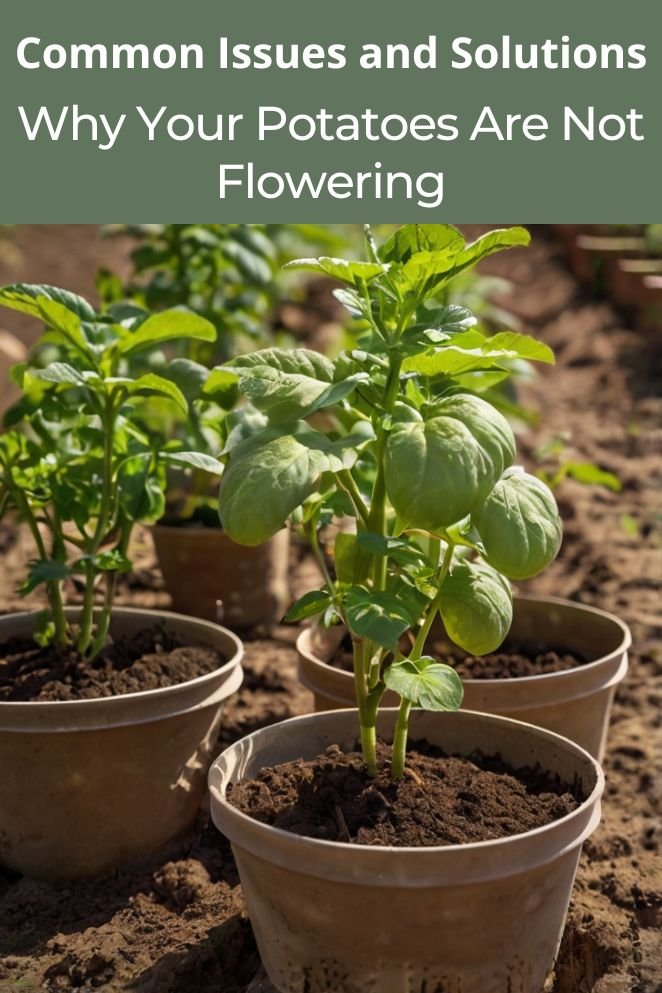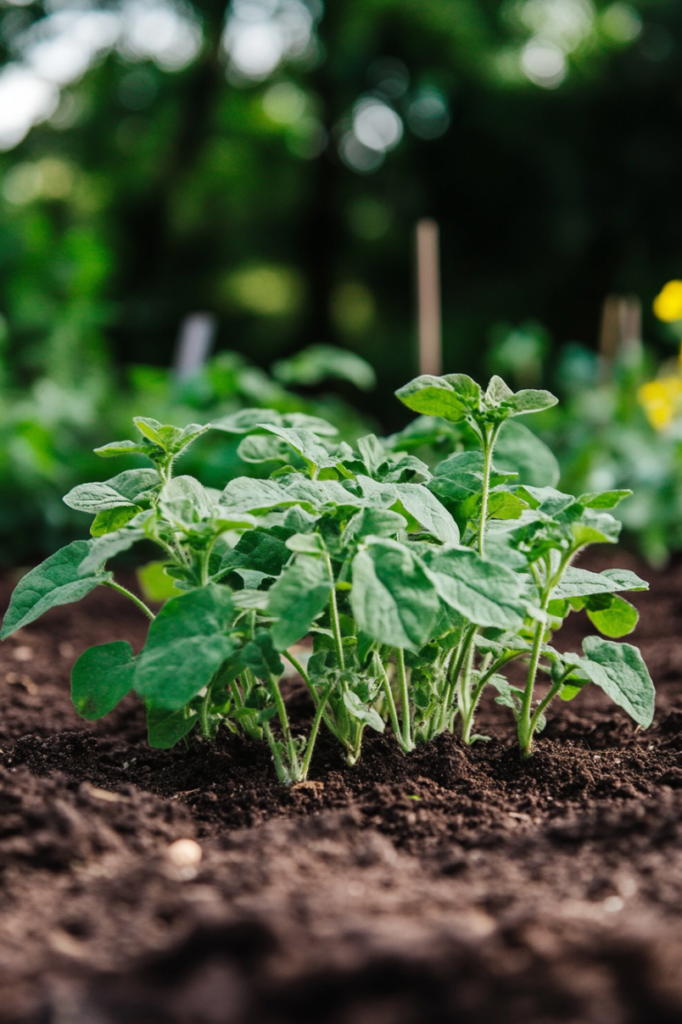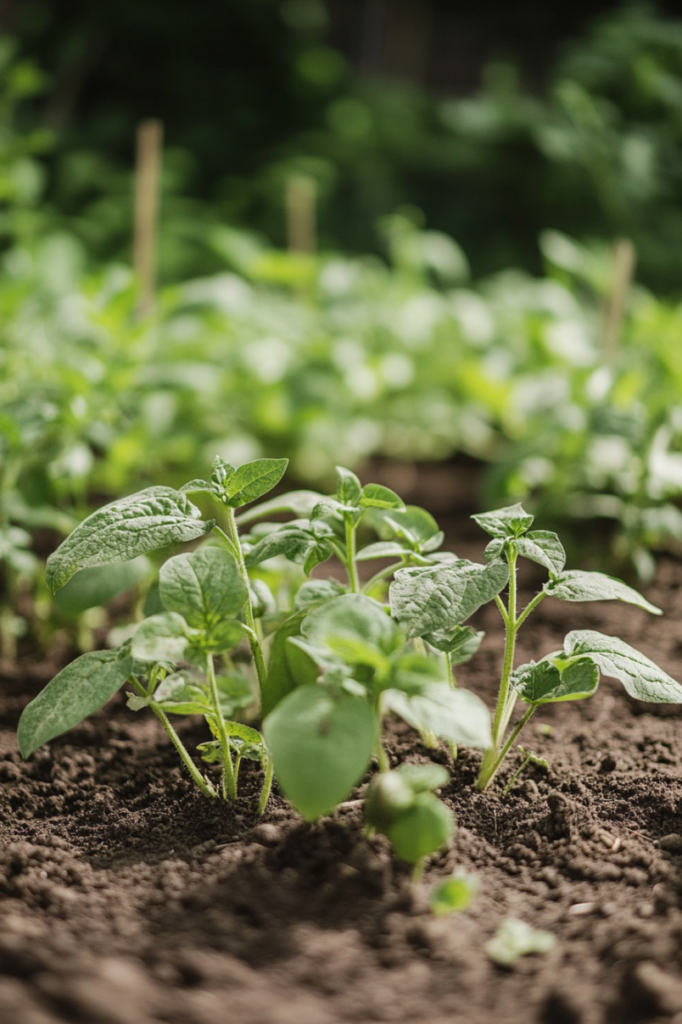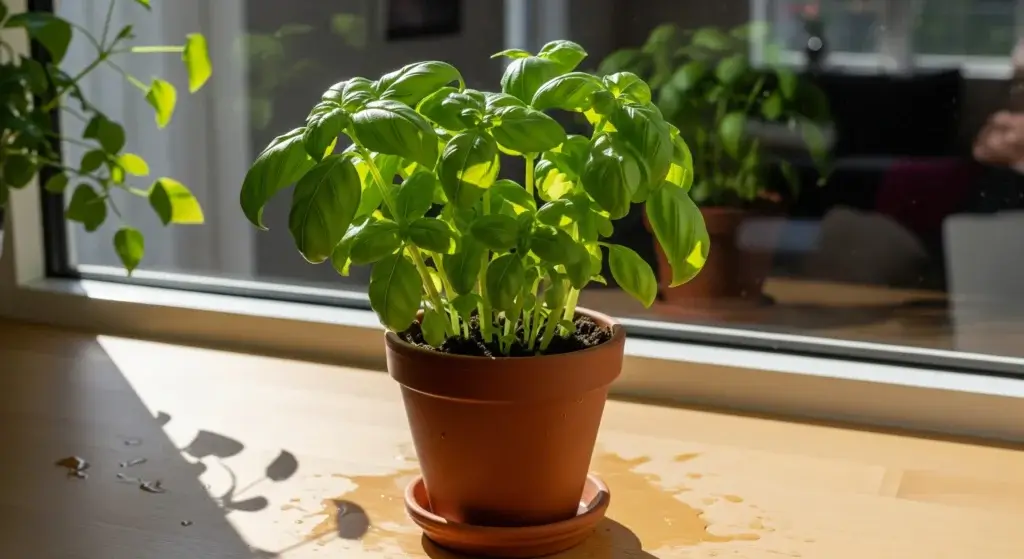
Growing potatoes can be a rewarding experience, but it can also come with its fair share of puzzles.
One common concern among gardeners is when their potato plants don’t flower as expected.
While flowering is often seen as a sign that the plant is thriving, the absence of flowers doesn’t necessarily mean your potato crop is doomed.
In this blog post, we’ll explore the lifecycle of a potato plant and delve into the reasons why your potato plants might not be flowering.
By the end, you’ll have a clearer understanding of how to manage your potato crop and when to expect a bountiful harvest.
Lifecycle of a Potato Plant
To understand why your potato plants might not be flowering, it’s essential to first grasp the basics of their lifecycle.
Potatoes are tuberous crops, which means the part we eat grows underground.
The lifecycle of a potato plant is a complex and fascinating process that involves several distinct stages, each critical for the plant’s growth and development.
Here’s a brief overview of the stages:
Dormancy
The potato tuber, harvested from the previous season, enters a dormant state.
This is a period of rest where the potato conserves energy.
Factors like temperature and humidity influence the duration of dormancy.
- Read also: The Ultimate Guide to Hilling Potatoes in Containers
- Read also: Tips and Tricks: Essential Tips for Hilling Potatoes in Grow Bags
Sprouting
- Duration: 2-3 weeks
When planted in the soil, these eyes begin to sprout.
This process, also known as germination, is triggered by warmth and moisture in the soil.
The sprouts, which are the first visible signs of growth, break through the soil surface and start the journey of the potato plant.
As the sprouts emerge, roots begin to form beneath the soil.
These roots are essential for absorbing water and nutrients from the soil, which will support the plant’s growth throughout its lifecycle.
Vegetative growth
- Duration: 4-6 weeks
Once the shoots emerge from the soil, the plant enters the vegetative growth stage.
During this phase, the potato plant develops leaves and stems, which are crucial for photosynthesis.
The plant’s energy is focused on growing above-ground foliage, which captures sunlight and converts it into the energy needed for tuber formation.

Tuber initiation
- Duration: 2-3 weeks
Tuber initiation begins when the potato plant flowers.
Flowering indicates that the plant is shifting its energy from foliage growth to tuber production.
Underground, stolons (specialized stems) start to form, and the tips of these stolons swell to become tubers—the potatoes we harvest.
This stage is crucial as it sets the foundation for the eventual size and number of potatoes.
Tuber bulking
- Duration: 4-6 weeks
Tuber bulking is the stage where the potatoes grow in size.
The plant channels most of its energy into the tubers, which absorb nutrients and water from the soil.
During this period, the size and weight of the potatoes increase significantly.
Proper care during this stage is vital for a good yield, including regular watering, hilling (mounding soil around the base of the plant), and protecting the plant from pests and diseases.
Maturation
- Duration: 2-3 weeks
The final stage in the lifecycle of a potato plant is maturation.
During this stage, the foliage begins to yellow and die back as the plant’s energy is fully transferred to the tubers.
The skins of the potatoes thicken, which is a sign that they are ready for harvest.
At this point, the potatoes have reached their full size and are ready to be dug up.
Harvesting
Once the potatoes have matured, they can be harvested.
It’s important to wait until the soil is dry to avoid damaging the tubers.
After harvesting, potatoes should be cured in a dark, cool place for about two weeks to harden their skins, which helps extend their shelf life.
Proper storage conditions (cool, dark, and dry) are essential to prevent sprouting and rotting.

Why Potato Plants Are Not Flowering
If your potato plants aren’t flowering, don’t panic.
There are several reasons why this might happen:
Variety of potato
Not all potato varieties are prone to flowering.
Some, particularly those bred for commercial production, have been selected for their tuber yield rather than their flowering ability.
Varieties like ‘Russet Burbank’ or ‘Yukon Gold’ may flower lightly or not at all.
Environmental conditions
Potatoes are sensitive to their growing environment.
Factors like temperature, light, and soil conditions can all affect whether a plant flowers.
If the conditions aren’t optimal, flowering might be delayed or absent.
- Temperature: Potatoes typically require cooler temperatures for optimal growth. If the weather is too hot, especially during the day, the plants may be stressed, leading to reduced or absent flowering. Ideal temperatures for flowering are generally between 60°F and 70°F.
- Day length: If daylight hours are too short or too long, it may impact flowering. In regions with longer days, some plants may not flower as they would in regions with shorter days.
- Moisture levels: Consistent moisture is important for healthy potato plants. However, excessive moisture or drought stress can both prevent flowering. Maintaining even soil moisture helps support the plant’s overall health and encourages flowering.
Nutrient imbalance
While nitrogen is essential for healthy leaf and stem growth, too much nitrogen can lead to lush, leafy plants that are less likely to flower.
Excessive nitrogen encourages vegetative growth at the expense of flowering and tuber production.
To encourage flowering, it’s important to use a balanced fertilizer that provides adequate phosphorus and potassium, which support flowering and tuber development.
Avoid over-fertilizing with nitrogen-rich fertilizers.
Stress factors
Pest and disease can stress potato plants, potentially inhibiting flowering.
Healthy plants are more likely to flower, so managing pests and diseases is crucial.
If the plants have been damaged by wind, hail, or mechanical injury, they may focus on recovery rather than flowering.
Gentle handling and protection from extreme weather can help reduce this risk.

Is Flowering Important for Potato Yield?
Common misconception
A common misconception is that flowering is necessary for a good potato yield.
In reality, the flowers themselves have little to do with the formation of the tubers we harvest.
Potatoes are grown for their underground tubers, not their seeds.
So, don’t panic if your potato plants aren’t blooming!
Unlike many other plants, potato plants don’t need to flower to produce tubers.
So, should you be worried?
Not at all! The absence of flowers doesn’t mean you won’t have potatoes.
In fact, some gardeners believe that plants that focus on tuber production rather than flowering tend to produce larger, better-quality potatoes.
When to harvest
In some cases, flowering can be an indicator of tuber maturity.
However, the absence of flowers doesn’t mean the tubers aren’t growing.
To determine harvest time, look for signs like yellowing leaves and dying vines.
These indicate that the plant is maturing, and the tubers are ready.

- Read also: The Ultimate Guide to Hilling Potatoes in Raised Beds
- Read also: Why Are My Potato Leaves Curling? Common Causes and Solutions
Conclusion
The absence of flowers on your potato plants can be puzzling, but it’s rarely a reason for concern.
Understanding the lifecycle of the potato plant and the factors that influence flowering can help you manage your crop more effectively.
Whether your plants flower or not, you can still achieve a bountiful harvest by paying attention to other signs of maturity and tuber development.



